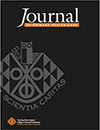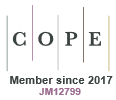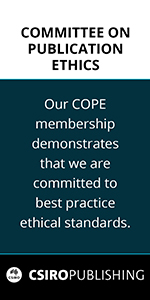
Volume 17 Number 1 2025
What is already known: General practitioners find examining the retina with direct ophthalmoscopy challenging and have low confidence in interpreting findings. What this study adds: General practitioners using smart-phone non-mydriatic fundus photography achieved more adequate views and positive findings of the optic nerve and fundus compared to direct ophthalmoscopy and had close agreement for management referral with the reviewing ophthalmologist.
HC24040 Abstract | HC24040 Full Text | HC24040PDF (802 KB) | HC24040Supplementary Material (290 KB) Open Access Article
What is already known: Primary healthcare teams are well positioned to promote and protect patients’ oral health, and it is likely that more people at risk of oral disease or needing oral health care will present at primary healthcare practices. Primary healthcare teams need to have sufficient knowledge and confidence to address patients’ oral health complaints. What this study adds: Doctors and nurses appear open to incorporating oral health in their day-to-day practice. Integrating oral health in primary health care in Aotearoa New Zealand will require changes at the individual, professional and systems levels.
HC23153 Abstract | HC23153 Full Text | HC23153PDF (727 KB) | HC23153Supplementary Material (2.5 MB) Open Access Article
What is already known: There is increasing concern about the health and wellbeing of tertiary students internationally and comparatively little is known about the context in New Zealand, especially the support being provided for minority students. What this study adds: This research provides information on support services for Pacific students at a university in New Zealand including students’ response to support provided during the COVID-19 pandemic.
HC24039 Abstract | HC24039 Full Text | HC24039PDF (731 KB) | HC24039Supplementary Material (275 KB) Open Access Article
What is already known: Dealing with uncertainty in medicine is troublesome. General practitioners are vulnerable to uncertainty due to their exposure to undifferentiated illness. Patient encounters, especially with those suffering from ambiguous conditions, can foster introspection within clinicians. What this study adds: This qualitative study suggests that conceptualising uncertainty as a holistic challenge, and implementing a bio-psycho-social problem orientation may help clinicians manage uncertainty in a manner that leaves the patient feeling positively supported and the clinician feeling positively inquisitive.
HC24055 Abstract | HC24055 Full Text | HC24055PDF (704 KB) Open Access Article
What is already known: This study explores the communication challenges between general dental practitioners and general medical practitioners, especially when managing patients with complex medical conditions and multiple medications. It highlights key barriers such as time limitations, lack of knowledge, and the absence of integrated health records. What this study adds: The research offers practical solutions, including interprofessional education, shared health record systems, regular meetings, and clearer referral guidelines to improve collaboration between these healthcare providers.
HC24071 Abstract | HC24071 Full Text | HC24071PDF (713 KB) | HC24071Supplementary Material (86 KB) Open Access Article
HC24082Envisaging better care for patients with complex multimorbidity in Aotearoa New Zealand
What is already known: Long-term conditions programmes in New Zealand have traditionally been modelled on the Chronic Care Model from the United States (Wagner) and the Australian (Flinders) Partners in Health programme. In a changing health landscape, there is an increasingly diverse population with multimorbidity who need individualised and culturally competent care. The effectiveness of traditional programmes have been questioned, particularly for the most vulnerable people in our communities. What this study adds: The Client-Led Integrated Care model did not uniformly address the needs of all patients, nor did it target those with the most ability to benefit. Implementing programmes for multimorbidity in primary care should take account of the need to prioritise equity and the social determinants of health.
HC24082 Abstract | HC24082 Full Text | HC24082PDF (776 KB) Open Access Article
What is already known: There is emerging evidence that task-shifting to alternate workforces may overcome some of the demands on ORL outpatient services. However, although follow-up care after grommet insertion is important, and may be appropriate to shift to other healthcare providers, there are limited data on both the family/whānau and GP perspectives and preferences within the New Zealand context. What this study adds: This study provides insight into the perspectives and experiences of families/whānau of children who have previously undergone grommet insertion, as well as the perspectives of GPs working within a large urban setting in Auckland, New Zealand, regarding the roles and responsibilities for providing follow-up care after the insertion of grommets.
HC24083 Abstract | HC24083 Full Text | HC24083PDF (764 KB) | HC24083Supplementary Material (201 KB) Open Access Article
HC24111Rural Māori experiences of accessing heart health care: a Kaupapa Māori qualitative analysis
What is already known: Rural Māori experience inequities in access to cardiovascular care compared to non-Māori and urban Māori. Despite this, little is known about the barriers and facilitators that drive access to quality cardiovascular care along the disease continuum for rural Māori. What this study adds: This study contributes new knowledge by prioritising the voices and experiences of rural Māori accessing heart health care, which have been largely absent from the literature to date.
HC24111 Abstract | HC24111 Full Text | HC24111PDF (978 KB) | HC24111Supplementary Material (259 KB) Open Access Article
HC23066Respiratory research with Māori and Pacific children living in Aotearoa, New Zealand: a systematic review and narrative synthesis
 , Jacinta Fa’alili-Fidow
, Jacinta Fa’alili-Fidow  , Dantzel Tiakia
, Dantzel Tiakia  , Dudley Gentles
, Dudley Gentles  , John Natua, Gemma Malungahu
, John Natua, Gemma Malungahu  , Bernadette Tatafu, Rudy Roodhouse-Hill, Ruby Tuesday
, Bernadette Tatafu, Rudy Roodhouse-Hill, Ruby Tuesday  , Maria Ngawati and Mataroria Lyndon
, Maria Ngawati and Mataroria Lyndon 
What is already known: Respiratory conditions are a major public health concern in Aotearoa New Zealand, and are responsible for a large proportion of the morbidity and mortality experienced by Māori and Pacific children. What this study adds: This paper provides an important overview of respiratory research that involve Māori and Pacific children living in Aotearoa New Zealand. It emphasises that more studies focusing on the needs of Māori and Pacific whānau and communities, and the use of culturally responsive approaches, are essential, ensuring that aspirations are whānau centred and tailored to their needs.
HC23066 Abstract | HC23066 Full Text | HC23066PDF (916 KB) Open Access Article
HC24056Technology-enhanced, culturally-informed primary care results in sustained improvements in biomarkers for Indigenous patients with type 2 diabetes – a pilot study
 , Rebekah Crosswell
, Rebekah Crosswell  , Suzanne Moorhouse, Helen Morton, Michael Oehley, Ryan Paul and Hamish Crocket
, Suzanne Moorhouse, Helen Morton, Michael Oehley, Ryan Paul and Hamish Crocket
What we already know: Type 2 diabetes disproportionately affects New Zealand Māori; however, current primary health care service delivery does not meet the needs of many. Continuous glucose monitors (CGMs) can support management of type 2 diabetes, although studies suggest that glycaemic improvements resulting from CGM use alone are often not sustained longer term. What this study adds: A model of health care delivery that uses CGMs within a culturally-informed program of education and optimised health care delivery improves glycemia in the short term, with improvements maintained by most for at least 12 months. This model demonstrates the value of using culturally-informed health care delivery to support improvements in health equity.
HC24056 Abstract | HC24056 Full Text | HC24056PDF (720 KB) Open Access Article
HC24108Evaluating the impact of the Piki te Ora extended primary care team on clinical outcomes in type 2 diabetes patients: a retrospective study
 , Claire Cannon, Rawiri Keenan
, Claire Cannon, Rawiri Keenan  , Martin Mikaere, Tammy Dehar, Suzanne Moorhouse, Janine Thompson and Lynne Chepulis
, Martin Mikaere, Tammy Dehar, Suzanne Moorhouse, Janine Thompson and Lynne Chepulis
What is already known: The existing literature acknowledges the challenge of managing type 2 diabetes (T2D) on a systemic level, especially within Indigenous communities like the Māori population in New Zealand. Effective management of T2D is crucial to prevent complications and improve quality of life. What this study adds: This study contributes to the body of evidence on multidisciplinary, culturally sensitive primary care models for managing T2D. It highlights the benefits of utilising an extended primary care team (including a nurse, dietician, kaiāwhina, social worker, admin support and occupational therapist) to improve clinical outcomes and address health disparities.
HC24108 Abstract | HC24108 Full Text | HC24108 Full Text | HC24108PDF (1.2 MB) | HC24108Corrigendum (690 KB) Open Access Article
HC24108_COCorrigendum to: Evaluating the impact of the Piki te Ora extended primary care team on clinical outcomes in type 2 diabetes patients: a retrospective study
HC24108_CO Full Text | HC24108_COPDF (620 KB) Open Access Article
HC25046 Full Text | HC25046PDF (628 KB) Open Access Article
HC24183 Full Text | HC24183PDF (718 KB) Open Access Article



